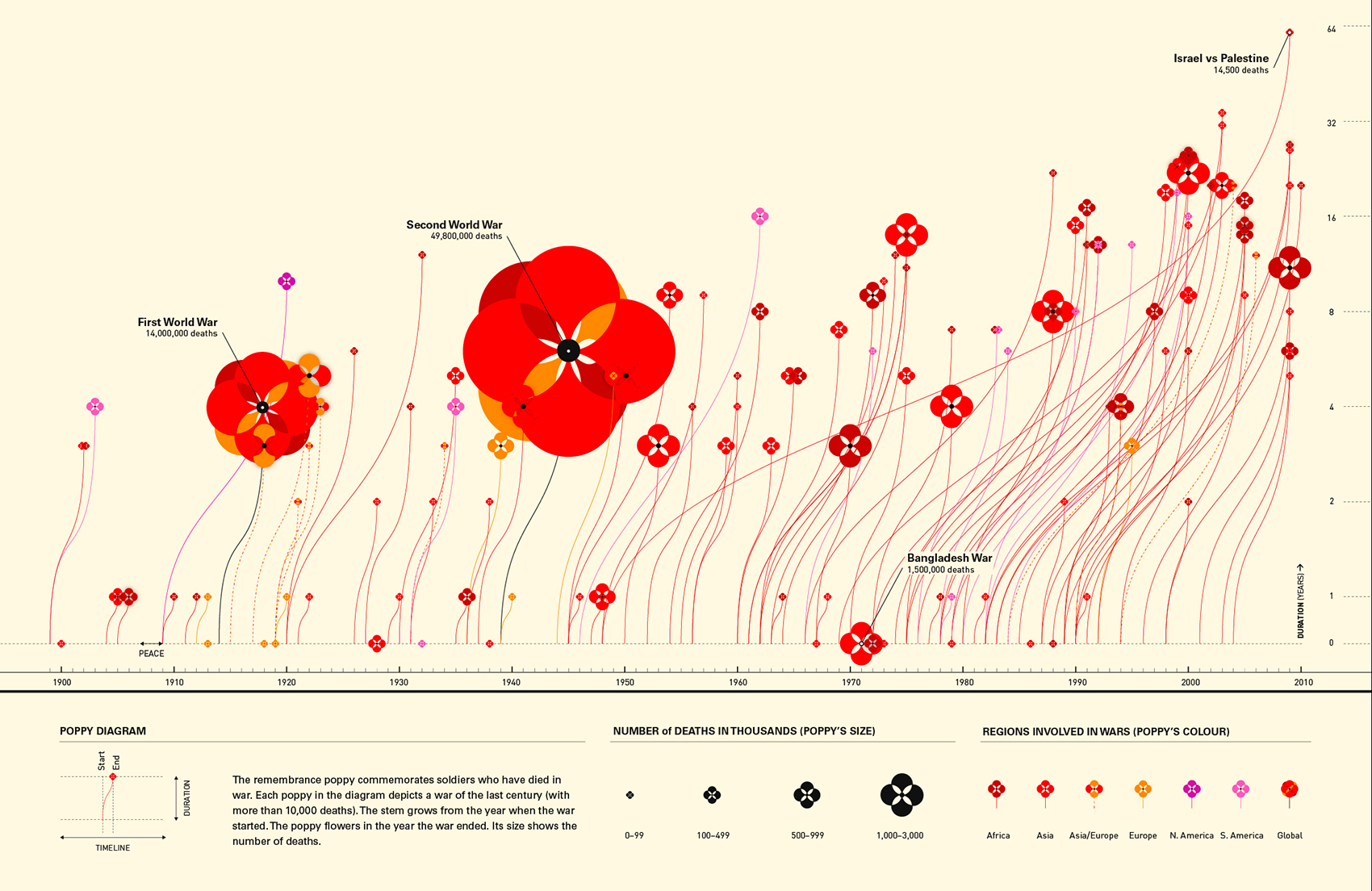Data Visualisation can change how we think about the world
If a pile of data falls in a forest and nobody sees it, does it really exist?
We’re swamped in a deluge of facts, figures, statistics, and numbers endlessly competing on a screen in order to be seen, heard and understood.
The explosion of articles surrounding big data serves to highlight how much of colossal impact big data is expected to have. ‘Big Data predictions for 2014’ articles endlessly stream into my inbox, and the consistent apocalyptic undertone is designed to really get CEO quaking in their boots. But now a month into 2014 the message has been communicated loud and clear, we all need to use big data if we are going to survive. But now we all know we need it, scientists demand that we must understand it.
For this reason data visualisation has become an increasing hot topic. Think Excel on steroids. PowerPoint on Prozac. Data visualisation today needs to bring the story of the data findings to life in a way that helps improve decision-making and ultimately improves the entire organisation of a company.
TWO FORMIDABLE FORCES
‘Seeing is believing’ is not just an old-age saying. Humans instinctively process information by visualising. Sight is our strongest sense. The human eye and its brain interface can comfortably process 10 to 12 separate images per second. In the most succinct way visualisation creates a universal language to understand complex notions. Through visualising data people get sense of ownership over it, and this empowers them to act on it. Data becomes Superman with visualisation being his Kryptonite. The combination of these two formidable forces, science and art, can be explosive, revolutionary and a mega game changer for the big data analytics architecture.
Data visualisation has the ability to understand the Koran when you can’t read Arabic. The power to explain quantum physics to a 10 year old. And most importantly, it has the ability to teach your entire company about big data.
From a technical standpoint, visualisation offers the ability to rapidly incorporate new data sets, remove restrictive metadata layers and increase performance. Clearly its value is unquestionable.
However combining science and art is not without its challenges.
CHALLENGES
Perhaps the biggest challenge for data visualisation is understanding how to abstract and represent abstraction without compromising one of the two in the process. This challenge is deep rooted in the inherent simplicity of descriptive visual tools, which significantly clashes with the inherent complexity that defines predictive analytics. For the moment, this is a major issue in communicating data; The Chartered Management Institute found that 86% of 2,000 financiers surveyed late 2013, were still struggling to turn volumes of data into valuable insights.
There is a need, for people to understand what led to the visualisation, each stage of the process that led to its design. But, as we increasingly adopt more and more data this is becoming increasingly difficult.
When big data is summarising and aggregating data in an illustrative way, it begs the question of what gets lost in the detail? And how much data can we actually represent in one go anyway?
What this means is that there is no escaping the fact that underpinning big data visualisation must be a robust approach to data governance.
The ability to combine art and science is like finding a world-class footballer that is also moonlights as a Ballerina. The two are paradoxical notions, but when we combine these two formidable forces they have the potential to create something awesome, and you discover that they just work in sync like Ying and Yang.
Data never sleeps; it is constantly producing and reproducing in an endless transience. But when mixed with design it provides us with extremely clarity, that ‘Ah ha’ moment that you get when you find your keys, phone or wallet. In this complex world, there is a need for us to combine these formidable forces, in order to make the invisible visible. Only by making sense of what we have at our disposal, will we uncover our potential.
The types of visualizations that are important to big data analytics and how they integrate into our current big data analytics architecture are still key questions, as is the issue of how search-based data discovery approaches fit into the architectural landscape. Fundamentally, if you have access to a training set of images and an established truth of what they are and mean, you can train a computer to do amazing things.

